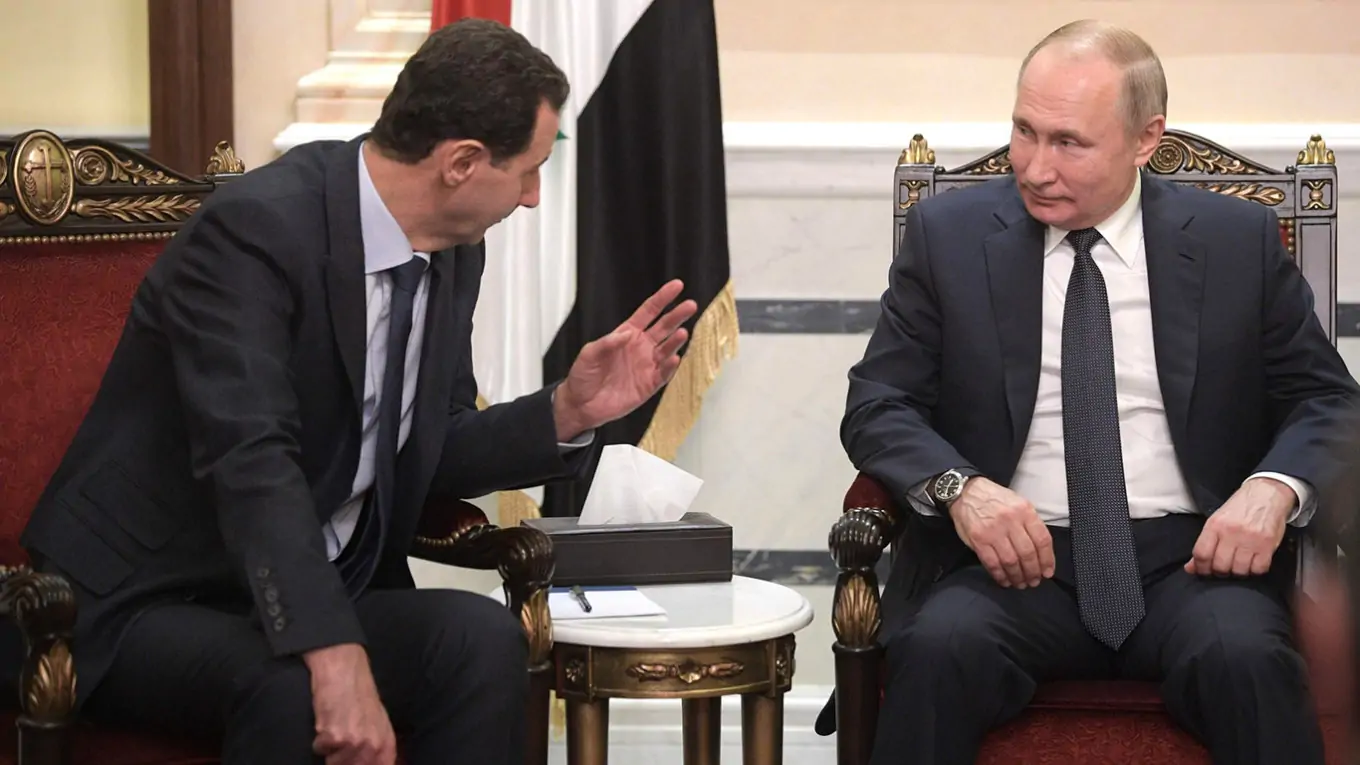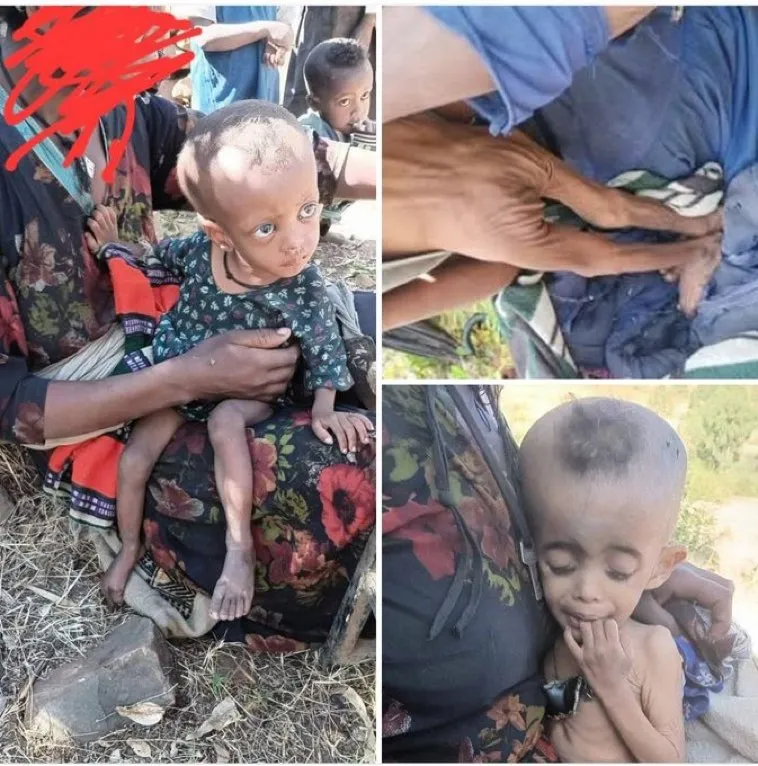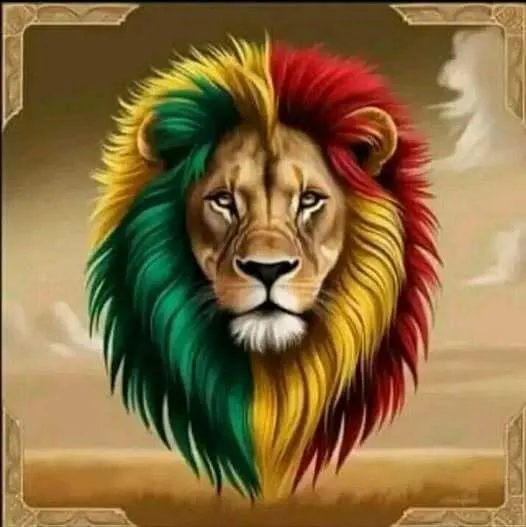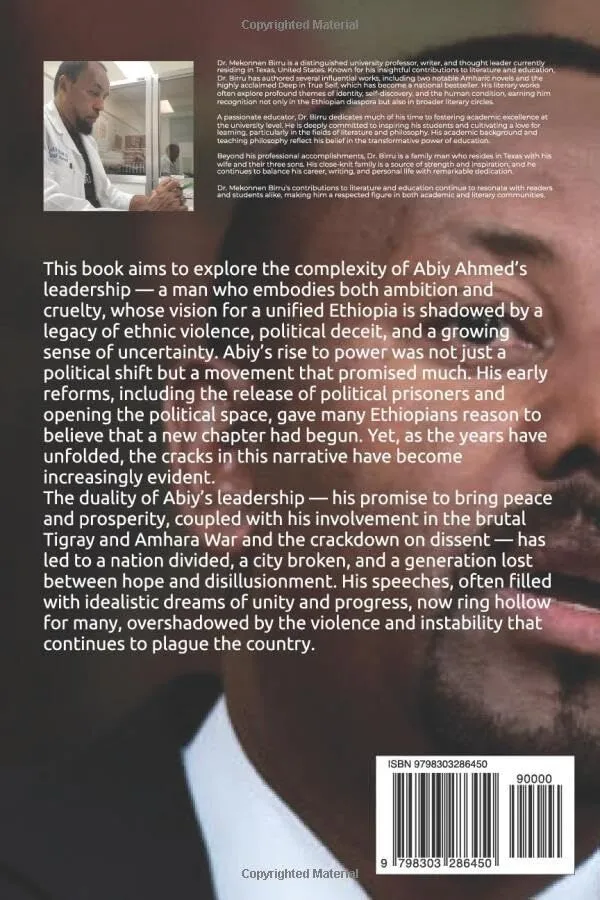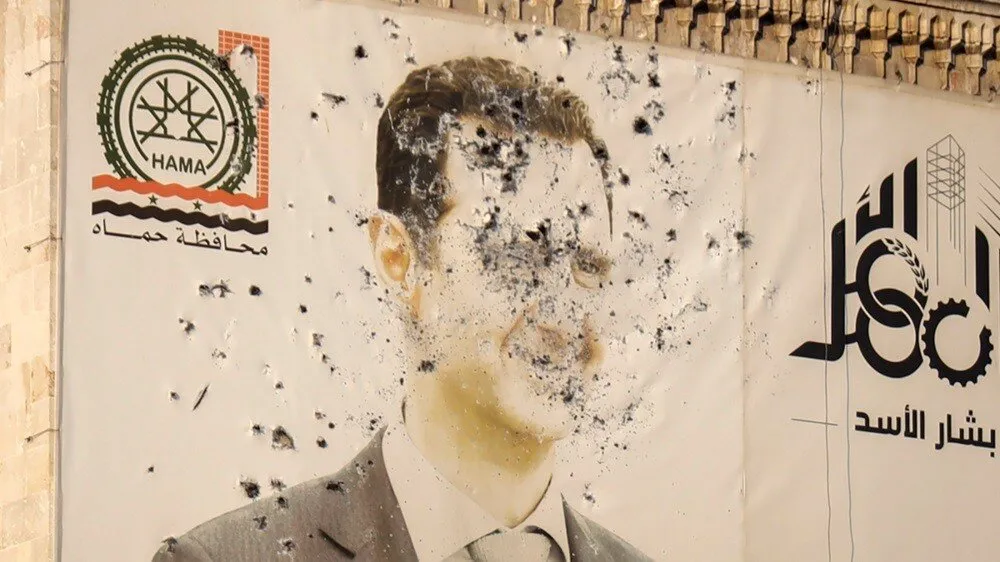BY TARIKU DEBRETSION
February 01, 2019
 Within a few months of signing a peace and cooperation agreement between Ethiopia and Eritrea in Asmara on July 7, 2018, things are changing at a staggering speed. Telecommunication between the two countries have quickly resumed. Ethiopians and Eritreans at the border jumped at the opportunity to visit and trade with each other without even waiting for formal structures to be put in place. The soldiers of the two states climbed out of their trenches to celebrate the New Year by dancing together, with the jubilant local people and the heads of the two states joining them. Ethiopia’s commercial ships have docked in Massawa after twenty years of absence and been loaded with zinc from Eritrean mines to be transported to China. The heads of states of Ethiopia, Eritrea and Somalia visiting each other’s state capitals were greeted with genuine public euphoria. Ethiopia, Eritrea, Somalia and Djibouti signed agreements for regional peace and cooperation. Ethiopia and Somalia appealed to the UN to lift its infamous sanctions on Eritrea. On November 14, 2018, The UN lifted the unjust sanctions which had reduced Eritreans to lives of agony and desperation.
Within a few months of signing a peace and cooperation agreement between Ethiopia and Eritrea in Asmara on July 7, 2018, things are changing at a staggering speed. Telecommunication between the two countries have quickly resumed. Ethiopians and Eritreans at the border jumped at the opportunity to visit and trade with each other without even waiting for formal structures to be put in place. The soldiers of the two states climbed out of their trenches to celebrate the New Year by dancing together, with the jubilant local people and the heads of the two states joining them. Ethiopia’s commercial ships have docked in Massawa after twenty years of absence and been loaded with zinc from Eritrean mines to be transported to China. The heads of states of Ethiopia, Eritrea and Somalia visiting each other’s state capitals were greeted with genuine public euphoria. Ethiopia, Eritrea, Somalia and Djibouti signed agreements for regional peace and cooperation. Ethiopia and Somalia appealed to the UN to lift its infamous sanctions on Eritrea. On November 14, 2018, The UN lifted the unjust sanctions which had reduced Eritreans to lives of agony and desperation.
For the first time in many centuries, local forces and local interests became the driving forces, as opposed to the dictates of superpowers and regional hegemons. This is why the process has been amazingly fast, more substantive and hopefully more enduring. The crucial initiative was undertaken by the young, dynamic prime minister of Ethiopia, Dr. Abiy Ahmed, who had the courage and foresight to dismantle the ”no war no peace” policy of the TPLF regime. The change was sealed when Eritrea’s president, Isaias Afewerki, accepted Abiy’s peace overture. In particular, Isaias’s decision to directly engage Ethiopia without any need for intermediary was a novel diplomatic move which sped up the peace process. Abiy demonstrated his diplomatic acumen by bringing together the presidents of Somalia, Djibouti and Eritrea to sign onto the regional peace and cooperation agreement.
Many pundits and political analysts ascribe the dynamics of this change to global forces: changes in US policy, the rise of China’s influence in the region, the resurgence of Russia or competition between the Gulf states Saudi Arabia and the UAE vs Turkey, Qatar and Iran. But these are concomitant factors rather than the leading causes. The main factor has been a nascent surge for peace and cooperation which has been the desperate yearning of the hapless people of the region for ages, but which has now found articulation and design in the actions of their leaders.
Colonialism carved the Horn of Africa (HOA) region into fragmented states. In the post-colonial era, the efforts of these fragmented states to sort out their mutilated existence and define their relationships often devolved into incessant violent conflicts. Many forms of competing national ideologies were hailed that then faded. Scores of devastating intra-state wars were fought. Proxy wars were fanned by superpowers, by regional powers and by local states. The net results: Somalia a failed state, Ethiopia on the edge, Eritrea in paralysis and Sudan in fragmentation. And the whole region of HOA became one of the most conflict-ridden regions in the world. This in turn paved the way for world powers to dictate the political future of the region without leaving room for input from the people of the region. Imagine, if you can, the rise of Emperor Haile Selassie into an absolute monarch without the military largesse of the US, or Siad Barre’s brutal dictatorship or Mingustu Hailemariam’s atrocities, without the Soviet’s massive military support and logistics. Even the TPLF’s domination was facilitated by US military and economic support. De Wall, Prime minister Meles’s confidant. characterized the Tigray People Liberation Front (TPLF) dominated Ethiopian People’s Revolutionary Democratic Front (EPRDF) regime, basically as a “counter-Terrorism rent-seeking state”[i]. The US’s generous military aid, which helped the TPLF/EPRDF to build one of the largest military forces in Africa, was considered payment for fighting America’s war against radical Islam—ignoring the fact that the same resources were used to brutally suppress its own people.
The nascent transformation currently unfolding is an antithesis of these phenomena. The elites of the region have come to the realization that divided they become peons of global and regional hegemons and united they stand strong to shape their destiny. Nationalist ideologies, focused on pushing one state’s parochial interests at the cost of a neighboring state, have not benefited their states in meaningful ways. It has only made them a dumping ground of obsolete military wares.
Even when external forces intervene with good intentions but without giving the leading role to local people and local forces, their actions end up leading to quagmires. The global effort to reconstitute the failed Somali state the fragmentation of the Sudan and South Sudan, the failed mediation between Eritrea and Ethiopia speak volumes.
The Abiy Factor
The landmark in the current political scenario of the Horn of Africa happened on April 2nd, 2018, when the EPRDF elected Dr. Abiy to be the prime minister of Ethiopia. His rise, which represented the ascendance of the Oromo People Democratic Organization (OPDO currently ODP) from junior partner in the TPLF-dominated EPRDF into the dominant party in the fragile alliance, is dubbed by some as a “silent coup d’ete.” But it represents more significant and fundamental changes in the political orientation and alliances locally and regionally. It came as a result of three years of resistance and protest by the Ethiopian youth, which paralyzed the TPLF-dominated EPRDF.
For the last twenty years, the perpetuation of a ”no war no peace” policy between Ethiopia and Eritrea was the cornerstone of the TPLF’s foreign policy. It was aimed at isolating Eritrea economically and politically with the intention of bringing down Isaias Afewerki’ s government through external pressure. With the aid of the US, it effected immense economic and political hardship on Eritrea. This policy came also at a major cost to Ethiopia. The TPLF, instead of marshaling its economic and political resources to solve Ethiopia’s daunting underdevelopment and poverty, was fixated on bringing down Isaias’s People’s Front for Democracy and Justice (PFDJ). It made itself totally dependent on Djibouti ports for its exports and imports. Djibouti leveraged its opportunity to extort Ethiopia of its direly needed hard currency. The proxy war it initiated was countered by Eritrea’s quid pro quo. Due to complex political problems, Ethiopia was vulnerable. This misguided policy of the TPLF, along with its misgoverning and corruption, triggered its downfall. The first domino piece to fall was its infamous no war no peace policy. This in turn triggered a cascade of changes.
The TPLF as well as some political analysts—even some noted one—characterized Abiy’s rapprochement with Eritrea as a hasty act. On the contrary, this was a thoroughly calculated move on the part of Dr Abiy. He manifested his deep understanding of the geopolitical dynamics of the region in a long and thoughtful interview ten months before he became prime minister[ii].
To briefly summarize: He described how the Horn of Africa (HOA) is a conglomerate of major religions and ethnicities which are fighting for resources, power and influence; how these have made HOA states the instruments of proxy wars by global and regional powers; how interstate and intrastate conflicts are intractable problems; how the monopolar power of the US is shifting into a multipolar world with the rise of China competing for economic and political influence; how regional powers, Saudi Arabia, UE and Egypt on the one hand and Turkey Qatar and Iran on the other hand are competing to carve spheres of influence in the region; how Ethiopia’s size and central location makes it the locus of influence; and how peace and cooperation between the states is essential not only for economic development but also to protect the region’s interests in the global political and economic sphere.
That was why soon after Dr. Abiy took power, he embarked on a shuttle diplomacy to Somalia, Egypt, Saudi Arabia and the Sudan. His critics characterized this shuttle diplomacy as foolhardy or fear of facing major domestic issues. On the contrary, these well-orchestrated strategic moves have netted him international stature, as well as unmatched popularity in the hearts of the people of the region. This stature and popularity translated into big political capital to push his reform agenda at home. Particularly his move to normalize Ethiopia’s relation with Eritrea had a flare of a genius. By directly appealing to the people of Ethiopia and Eritrea, expressing their sentiment for peaceful coexistence and cooperation in the languages they cherish, he unleashed a ground swell of popular euphoria, ”a love fest.”
These grand historical steps go beyond raising the spirit and optimism of the people. They represent concrete measures to untangle the intractable problems that have beset the region.
What did Ethiopia gain from peace with Eritrea? It gained access to Assab and Massawa, which will reduce its overall dependence on Djibouti and which will better serve the needs of northern and central Ethiopia. It will eliminate the massive expenditure of human and capital resources on an unnecessary military standoff. Peace with Eritrea facilitated peace within Ethiopia. Eritrea became a bridge for peace between Abiy’s government and half a dozen armed organizations which had been for decades engaged in violent struggles against the previous Ethiopian regimes. Furthermore, fanning broader Horn of Africa consciousness has the effect of countering the dive into narrower and narrower parochial ethnic and clan alliances of both the political elites and the masses. It boosted immensely the country’s stature in the global arena. Foreign aid and investment are gushing forth.
The Isaias Factor
President Isaias is a controversial figure. For some Eritreans he is a hero who led the Eritrean struggle to independence and still guides it to stand against forces which are trying to roll it back. For some Eritreans he is a ruthless dictator who has subverted their aspirations for democracy. For some Ethiopians Isais is the enemy who is responsible for the secession of Eritrea. According to them, he is an enemy who wants Ethiopia to disintegrate. On the opposite side, some Ethiopians see in him an ally against the TPLF and an ally in the struggle for democratic changes and unity of the country. Distinguished opposition leaders, such as professor Mesfin Woldemarion[iii] and Major Dawit have publicly affirmed this point of view[iv]. As a leader of a protracted and violent conflict that spanned nearly half a century, he is an amalgam of all the above elements. Someone’s hero is another’s villain. Yet he is an indispensable ally to lead the region from the quagmire of conflicts.
Ethiopia, Eritrea, as well as the whole HOA region, could hope for no better leader in the aftermath of the bloody divorce. He has a strong awareness of the historical, political, economic, cultural and strategical interdependence of Eritrea and Ethiopia. He has ad-infinitum reiterated his strong vision of two independent states with a strong economic, political and strategic alliance. He accepted the UN sponsored referendum as a peace bridge with Ethiopia. After Eritrea’s independence, he was actively working towards a strong economic and political relationship with Ethiopia and the rest of the HOA states. He has spoken at length against the ethnic-based federalism constructed by the TPLF. Because Eritrea has a similar ethnic and religious composition as Ethiopia, ethnic-based federalism is not only a menace to Ethiopia, but also a detriment to Eritrea too. His unequivocal endorsement of Abiy’s peace overture created a dynamic synergy between them. This dynamic synergy between the two leaders epitomizes the spirit of the two fraternal peoples. The hero’s welcome accorded to president Isaias by the Ethiopian people is a personal vindication and a tribute to his principled stands during the low and high moments in the two states’ history.
Eritrea won its independence after thirty years of war with a very little moral or material support from the international community. Eritrea’s independence was mainly a result of a devastating armed struggle and bitter sacrifices. When it gained its independence, it was greeted by its neighbors as a bellicose newcomer. Two decades of economic and political isolation, orchestrated by the TPLF and the US, dimmed Eritrea’s bright hopes. This created among Eritreans a feeling of a beleaguered state. Eritreans, defiantly but with a sense of resignation, persevered the UN sanctions and isolation, the economic hardships and the deferment of their hopes for a vibrant democratic state. Others braved arduous journeys, through forbidding deserts and across treacherous seas, to seek a better life in another place. The Eritrean reality is shrouded by the sadness of its enormous sacrifices and graced by its indomitable spirit to stand for its rights as a nation.
Isaias didn’t create the beleaguered state. He turned it into an impregnable fortress. A target of regime change policy, by the might of the US and cunning diplomacy of TPLF, he had no other choice but to fight on to break loose from this deadly chokehold. He gave this David vs Goliath fight his brand and flare. What he lacked in diplomatic tact, he made up for with his resilience. In the end he won, and Eritrea triumphed against external impositions.
What did Eritrea gain from peace with Ethiopia? It will reduce the heavy toll the Eritrean people have had to bear to defend their country. The economic engagement is highly beneficial to both countries. The freeze in economic relations between the two countries was imposed on Eritrea by the TPLF regime. With Dr. Abiy as the prime minister of Ethiopia, it has overcome its isolation. Instead of being treated like a pariah state, it has become a hub of top-level diplomatic traffic. It gained a reprieve from the well-orchestrated campaign of defamation and the endless self-fulfilling prophesies of its imminent demise in the international media. Tourism from Ethiopia and from all corners of the globe is rising. The PFDJ would be advised to take a lesson from Abyi’s administration about how to use this peace as a selling factor to woo international aid and investment.
Now that peace is flourishing in HOA, will the fortress Eritrean state be transformed into a flourishing democratic state? Will president Isais use the tremendous political capital he has gained to lead the democratic transformation? Will he take his triumph as vindication and take measures to heal Eritrea’s internal rifts?
If genuine change is initiated from within the ruling circle, change can come peacefully with less sacrifices. If President Isais and the PFDJ fail to take the initiative, then change will come from outside, from dissidents inside and outside country by force. That would be a destructive step into the abyss. Yet change is inevitable one way or the other.
The TPLF factor
TPLF’s policy towards Eritrea and towards the rest of the ethnic groups in Ethiopia are two sides of the same divide and rule policy. It was the political foundation of a narrow clique’s domination. The TPLF intentionally fostered and manipulated ethnic conflicts to prolong its tenuous hold on power. It wove historical conflicts into its foreign and internal policies. It fomented ethnic conflicts in its political propaganda. It amalgamated ethnic fissures into its institutional and organizational structures, and it even enshrined it in its constitution.
The Ethiopian people, particularly the youth fed-up with TPLF’s shenanigans, revolted. Through mass demonstrations and civil disobedience that lasted for three years, they paralyzed the EPRDF rule. Finally, the TPLF lost its dominant position in the EPRDF. Abiy and team Lemma ascended to power. One of the first bold actions they took was to dismantle the no war no peace policy with Eritrea, which they did by accepting unconditionally the Algiers peace accord which had been frozen by the TPLF for 18 years. This act heralded peace not only between Eritrea and Ethiopia, but also in the whole HOA region.
The TPLF’s institutional hold has been dramatically dismantled. They are no longer in a position to dictate policy in Ethiopia. Their only means of hindering the progress is sabotage.
The party and Tigray people are severely divided. The old guard, who are in their 60’s and 70s, who have amassed wealth by plundering Ethiopia and now have nowhere to turn, have retreated to Tigray kellile. The young party leaders are full of fury and bewilderment, and their tactics are frantic adaptations to day-to-day changing circumstances. The Tigray peasantry, which has paid dearly to bring changes in Ethiopia, which had been ignored and neglected when things were going well for the TPLF leadership, is now asked to be the TPLF’s fallback. The educated urban Tigrayans feel beleaguered and their cosmopolitan life style threatened.
The old guard, which feels especially threatened by the peaceful rapprochement between Ethiopia and Eritrea, try to impede the progress by spreading fear and xenophobia and by inciting acts of sabotage. In early January 2019, they incited youngsters, women and children to roadblock Ethiopian armed forces who were withdrawing from the border with Eritrea per the two countries peace agreement. [v]
Chief of Staff Let. Gen. Berhanu Jula characterized the incidence and the military’s response as f0llows:
There is an entity that has been employing fear and concern as a strategy. There is a force that is using the people as a cover to bring about instability. They are not many, and I am sure they will be exposed. Until then, we will not do anything that will bring us to a collision course with the people. We better feel bad rather than making the people feel bad.
The people of Tigray are closely tied, historically, culturally and linguistically, with Eritrea. They are close cousins with Tigrinya, the major ethnic in Eritrea. Many Tigrayan elites have supported and fought alongside Eritreans. They were inspired to organize and fight for their rights too. EPLF and TPLF had a united front for seventeen years. Despite frequent internal frictions, it was the longest lasting and most successful united front in Ethiopian as well as Eritrean history. Their united struggle was the paramount force that shattered the derge’s regime. Sadly, as a result of subsequent power struggles, they ended up unleashing the devastating 1998-2000 border war and two decades of mischief to undermine each other. Yet, despite the past devastating wars, the deportations and the economic hardships they have both lived under, the peoples’ affinity to each other–particularly, their desire to live in peace with each other, mend their broken lives and make up for lost time–has been unequivocally demonstrated. This peace between Ethiopia and Eritrea is a product of their enduring yearning for peace and fraternity.
Ethiopian and Eritrean elites should beware not to fall into the TPLF old guard trap by lumping the TPLF with the Tigray people. Other Ethiopians and Eritreans should sincerely understand and sympathize with the fact that the people of Tigray are the victims not the perpetrators of evil. Dr Debretsion[N1] in his recent televised speech admonished the hot-headed Tigrayan for trying to block the federal force’s movements and the taunting of Ato Gedu Adnargachew, president of Amhara killele. He further gave information about lengthy rapprochements and dialogs between the Eritrean and Tigray killele officials at different levels in his effort to quell the preposterous propaganda fomented by the TPLF’s old guard, that the peace between Ethiopia and Eritrea is in an alliance to attack Tigray. This sharp contradictory political line within the TPLF is a manifestation of a deep-seated division. [vi]
All those Tigrayans, who support the changes, which, by the way, are the vast majority, should be encouraged to be part of the peace movement. Bringing all positive forces under the big tent will make the movement strong and enduring. On the other hand, trying to score ephemeral victories or futile vendettas will be counterproductive.
In the same manner that Eritrea facilitated the rapprochement between Ginbot7, ONG, ONLF and the EPRDF, it should try to bring into the fold all peace-loving factions in Tigray. Opening the border wide open, not imposing new restrictions, is the path forward.
Conclusion: All factors in balance
Yet, even though a fresh invigorating wind of change is lifting our spirits, there are shuddering cold counter developments consciously working to subvert the movement while others, in pursuit of their own parochial interests, are inadvertently playing a negative role. The situation calls for vigilance.
In Ethiopia this great democratic transition is progressing on a fragile landscape. There was already one assassination attempt on Dr Abiy and one failed coup attempt so far. A couple of million people are internally displaced as a result of fratricidal conflicts. Armed bands are staking their claims and uprooting members of other ethnic groups that have lived in harmony for several generations. They are burning houses, looting businesses, robbing banks and blocking roads. Some are using the mass media to incite vulnerable youth by fabricating and spreading rumors. All of these actions are pushing Ethiopia to the edge. If Ethiopia implodes, it will be the end of the peace movement. As Ethiopia goes, so will the whole region.
However, these ominous treats cannot dim the epochal revolutionary changes the country is undergoing. The depth and breadth of the political and social discussions and the civility of the public participating in the discourse represents the soul searching of a nation. The freedom of the media and the tolerance of those in authority makes those dark times under the previous regimes feel ages away. The Abiy/Lemma team is guiding Ethiopia, so far successfully, with patience, restraint and appeal to the peoples’ commonsense. Some with good intentions have urged Dr Abiy to take draconian measures to assert authority, but authoritarianism is not the answer. It is exactly why the people of Ethiopia have rebelled against three despotic and corrupt authoritarian regimes.
The Eritrean community support for peace with Ethiopia is unequivocally strong. Their hope is not only for peaceful and fraternal existence with their neighbors but, very importantly, for the emancipation of their own society too. That is the unfinished chapter of their long arduous struggle. Now that peace has flourished in the neighborhood, the ‘fortress state’ must be transformed into a flourishing democratic state where people as individuals, as communities and as a nation could take control of their destiny.
In Eritrea, some of the opposition groups and individuals have become frantic. Standing against any initiative taken by the government, positive or negative, is the primordial and instinctive response of the diehard oppositions. Their media is filled with articles and analysis which try to cast doubts on the whole movement. That is tantamount to throwing the baby out with the bath water. The peace movement is not about President Isais or PFDJ rule; it is much larger. It raises existential questions about the survival and the future of the Eritrean state. It is about creating the essential environment to bring the kind of changes all segments of Eritrean society can accept. The peace movement requires the united support of all political factions, both the elites in power as well as in opposition. Acts such as the assassination attempt last December on General Sebhat Eframe, a top government official, are counterproductive[vii]. And equally, any measure by the authorities to tighten their hold will be futile. It would only increase the pressure rather than defusing it.
There is some legitimate unease about the peace process among common Eritreans, even among diehard government supporters. Its source is lack of transparency on the part of the Eritrean government. Eritreans depend for information about the details of the agreements and deals between the two states on second-hand and third-hand sources of information, i.e., on Ethiopian and international media rather than on their own government. The extent and degree of the public discussions and participation in this matter in the Ethiopian political arena, as compared to the Eritrea arena, is day and night. Lack of open discussions and participation by the general public has the effect of reducing the people of Eritrea into distant onlookers on matters so dear and close to their lives.
President Isaias and PFDJ should take this opportunity to loosen their iron grip and encourage the people’s participation through open forum discussions and open media. The people should be encouraged to express freely their support and even their opposition, if they have any. People in authority should be accessible to clarify all questions directly and in a timely fashion. There is no discernable explanation why such wildly popular public developments should be shrouded in secrecy. The Eritrean government should facilitate local and regional conferences of the people. It should welcome Eritreans in diaspora to participate, regardless of their political affiliations.
Since last June tremendous progress has been achieved. Hope has flourished. The driving force is the peoples’ yearning for peaceful coexistence and fraternal cooperation.
It is the product of their struggle to define their destiny.
It is a deep ground swell of democratic movement.
It is intertwined with their struggles to create just, sustainable societies and states.
It is a movement that arches from the local to the regional.
It is a counter-movement from the parochial divisive mindset to a global and inclusive consciousness.
Peace and fraternity to the people of Horn of Africa region!
This is Part I. Part II will deal with Somalia, Djibouti and the Sudan and South Sudan and Part III will deal with the role of global and regional powers.
[i][i] The Real Politics of the Horn of Africa: Money, War and the Business of Power 1st Edition
by Alex de Waal
[ii] https://www.youtube.com/watch?v=P9nDRxHtL3
[iii] https://www.youtube.com/watch?v=Bzp21zjA85k
[iv]http://ethioforum.org/the-way-forward-for-ethiopia-and-eritrea-by-dawit-woldegiorgis/
[v] https://www.zena365.com/watch.php?vid=ed16d0645
[vi] https://www.youtube.com/watch?v=dCwYiO9xI9w
[vii] https://twitter.com/AmbassadorEstif/status/1078902506892144641
[N1]Include this Debretsion’s other name (since Debretsion is this piece’s author).



